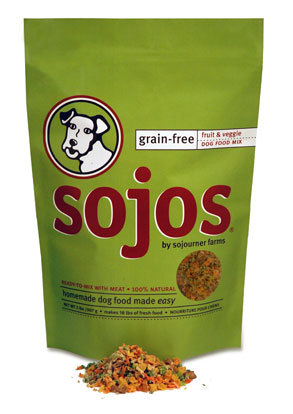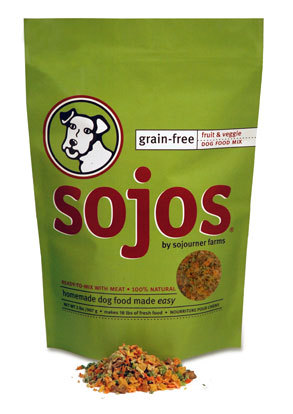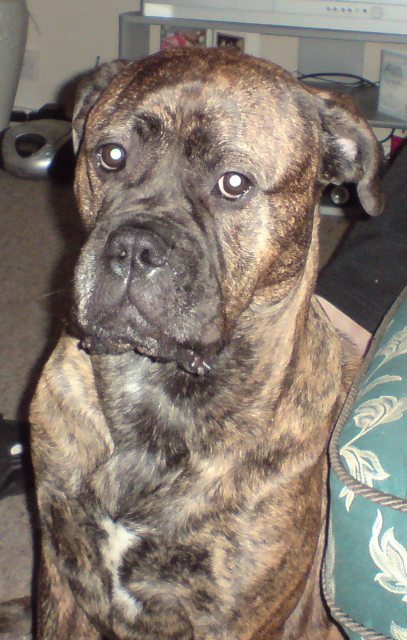QuestionI have an 11 month old male black great dane and he isn't as tall as most of the charts say he should be, nor he doesn't weigh what most of them say he should. He's a picky eater. He's weighs approx. 85 lbs and is 27 inches at the shoulder. For the past month he has been growing 1/2 an inch per week. Could he be in a growth spurt and growing faster than he can put weight on? I'm afraid that he won't be as big as he should be. Could he possibly be a late bloomer (if that's possible)? I'm trying to start him on the BARF diet. He seems to be liking it but he doesn't want to eat his dog food. What can I do to get him to gain weight and grow?
AnswerToo much of too rich of a diet is the worst possible thing for a large breed puppy. Fortunately, Great Danes often refuse to eat more than they need, and sometimes even leaving their ribs showing. That is fine, as long as they are eating a complete and balanced diet. The best thing is to let his joints develop under as less stress possible by allowing him to stay lean and grow at his own rate. I would be feeding him a commercial adult kibble, making sure it has less than 1.5% calcium.
Most of what I read about commercial dog foods is wrong. I see no basis for most of it but speculation, junk science, and marketing hype designed to push emotional buttons.
Suppose you knew a breeder that bred hundreds of dogs a year, mostly Labs, Shepherds, and Goldens. They provided all the medical care for most of them the first year. At the end of it, they did a complete physical including hip X-rays on all of them. They then spent $35,000 training them before giving them away. They have a large data base of breeding records. Dogs with any physical or temperamental problems are unfit for the program and are a waste. Their well equipped clinic and vet staff are available for serious problems as long as the dog is working. When the dog is no longer able to work, it is replaced at again the $35,000 plus a large emotional upheaval for the person depending on the dog. They have experimented with different diets and exchanged data with other such breeders. Don't you think that what ever they are feeding is healthy and safe? What kinds of controlled studies do you have backing your choice of diet? How objective are the sources of your information? Is your dog's health, their top priority?
I have been raising puppies since 1991 for a large dog guide school that does exactly that. What do they feed? They instruct us to feed Pro Plan chicken and rice puppy chow until 4 months and then switch to adult Pro Plan chicken and rice. I know enough of the people with the trained dogs to know they continue the Pro Plan. The group I meet with monthly for training includes people that have raised puppies for 6 different service dog schools. Some of them are feeding other common commercial chows including Iams and Eukanuba. Any dog owner wanting a healthy, long lived dog can make this regimen work, leaving more time to spend on the dog. It is also relatively economical.
The BARF diet is built on many fallacies, starting with the idea the chicken from the supermarket is similar to natural prey. Not so. At the processing plant, all the nutritious insides including the organ meats are removed. They are sold to the commercial dog food producers. Have you ever seen a predator eat a kill? What do they eat first? Right, all those nasty byproducts that go into the commercial dog food.
The AVMA condemns the BARF diet. And they are not concerned about contaminating you and your families food handling all that raw meat in your house. The FDA and the CDC are. If you do go with it, practice good sanitation.

 food/brand, mini schauzer; dog food recipe pancreatitis;
QuestionQUESTION: my mini schnauzer is 16 mo, 15 lbs, a
food/brand, mini schauzer; dog food recipe pancreatitis;
QuestionQUESTION: my mini schnauzer is 16 mo, 15 lbs, a
 pancreatic immune deficiency diet sojo dog food mix;
QuestionI have a 3 1/2 yr old lovely German Shepard fem
pancreatic immune deficiency diet sojo dog food mix;
QuestionI have a 3 1/2 yr old lovely German Shepard fem
 dog food problem
Question
Diana
Dogs age: 15
Last vet visit: 2 weeks ago
dog food problem
Question
Diana
Dogs age: 15
Last vet visit: 2 weeks ago
 Shih-tzu with UTI; struvites; crystals in urine; SoJo natural dog food diet;
QuestionQUESTION: Hi. I am hoping you can help me
Shih-tzu with UTI; struvites; crystals in urine; SoJo natural dog food diet;
QuestionQUESTION: Hi. I am hoping you can help me
 Diet/Nutrition
QuestionKaiya
QUESTION: I have just become a own
Diet/Nutrition
QuestionKaiya
QUESTION: I have just become a own